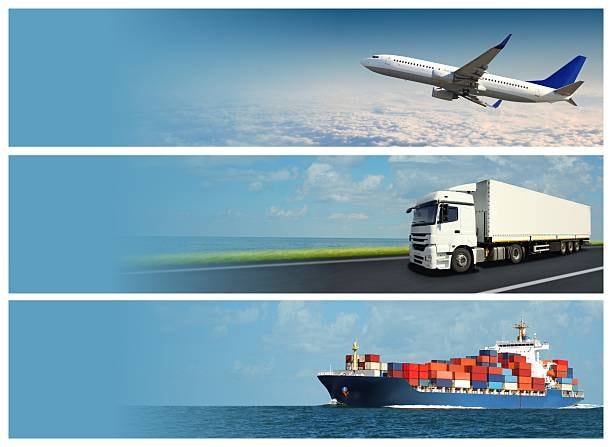
International shipping involves a crucial business decision that can affect business bottom line, timing of delivery or satisfaction of customers negatively or positively; whether to use ocean freight, sea freight or air freight. In this comprehensive guide you will find out the main points of differences, pros and cons of each of the shipping methods so you can make your own decisions within the frames of global logistics planning.
Understanding the Fundamentals of International Freight

The transportation of international freight forms a core axiom of international trade which serves as the connection between manufacturers, suppliers and consumers across continents. The decision on whether to operate sea freight or air freight vs. other methods is dictated by diverse elements such as cost, expediency, nature of cargo and business preferences. Sea freight entails shipping of cargo by cargo vessels across oceans and air freight relies on commercial aircraft to transport a carrier at a high pace across countries.

Billions of tons of freight are processed by the global freight industry per year, of which sea freight makes up about 90 percent of international trade by volume, air freight has little volume but makes up about 35 percent by value. Such a sharp contrast underlines the differences in purposes of both modes in the international supply chain, especially when considering larger shipments .
Cost Analysis: Sea Freight vs Air Freight
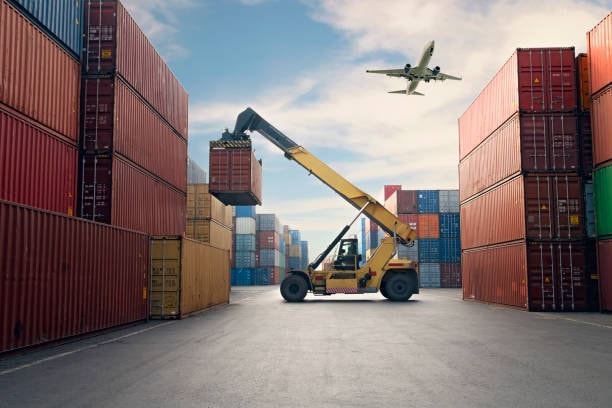
People look at cost as the main parameter to look into as it is used by the majority of companies when choosing their ways of shipping, including smaller shipments . The traffic costs approximately 5-10 times lower than air freight logistics, covering the same cargo load. This is a great price advantage which makes sea freight a choice method of transportation in moving bulk goods, heavy shipments and goods that are not urgent.
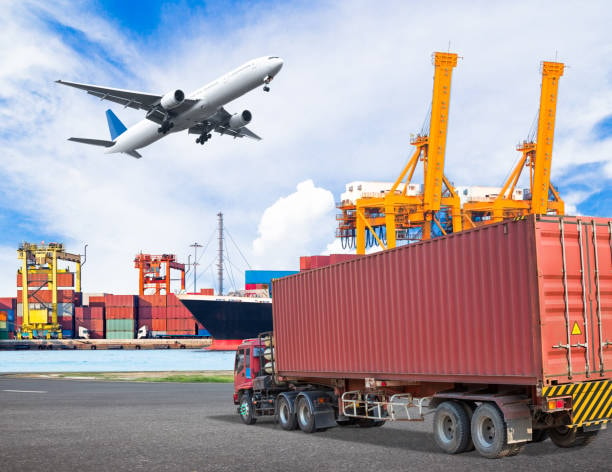
Air shipping prices are calculated on the basis of the highest actual weight or volumetric weight and it is thus on the costly side when large items are light. The cost of sea freight is usually determined by intermodal containers space (TEU – Twenty-foot Equivalent Unit or FEU – Forty-foot Equivalent Unit) and is thus cheaper to business ventures that have full consignment containers.
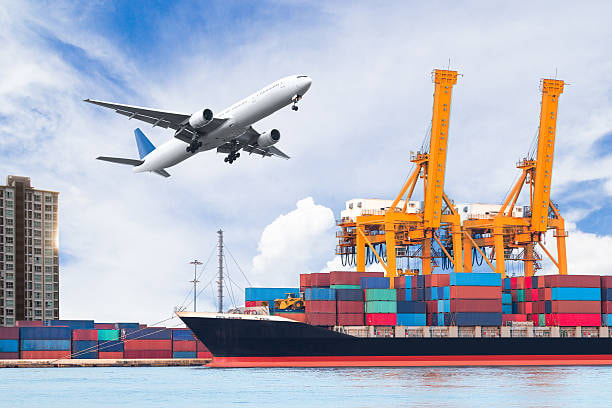
Nevertheless, in total costs of logistics, a business should quantify other costs that may include carbon emissions, inventory holding costs, warehousing costs, and effects of prolonged transportation on cash flow. In the case of high-value time sensitive products, the extra cost of air freight could be worth the inventoried advantage and accelerated revenue offset.
Transit Time Comparison: Speed vs Economy
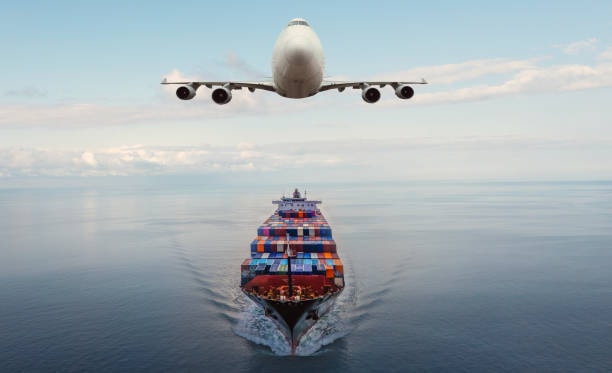
The difference between the seaside trade and the air cargo products is in the transit time which is the biggest discrepancy within the operations. Air freight delivery normally has 1-7 days of international deliveries, based on destinations and flight schedules. This is possible because it is faster thus useful in time-sensitive freight, perishable goods, humidity controlled containers, and just-in-time production.
International shipping using sea freight for bulk cargo, on the other hand takes 15-45 days, depending on the destination and route, port arrival or congestion, as well as arrival of customs. It has major shipping paths such as Asia to North America which is about 14-21 days and Asia to Europe path which is about 2535 days. Although the transit time is higher, sea freight has steady scheduling, normal departures of vessels, and well-mounted shipping schedules.
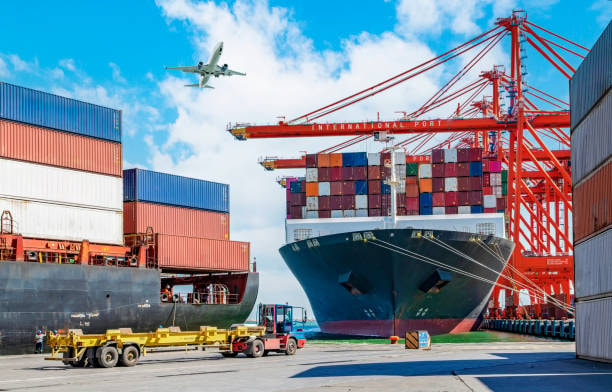
The desire to use speed or economy usually depends on the nature of business you have, expectations of your customers and market dynamics. In business with demanding customers, e-commereces may consider air freight vs sea transport to supply products, whereas industrial manufacturers whose demand levels are anticipated may utilize the low prices of the sea transport.
Cargo Capacity and Volume Considerations

Sea freight is also superior in large consignment of goods and cargo that would be cost prohibitive using air cargo. One container vessel has a capacity of 20000+ TEU and huge amounts of cargo can be moved at a low cost, especially when utilizing various cargo carriers . Common containers (20ft and 40ft) are highly flexible in cargo handling and they can accommodate all types of cargo such as consumer goods, industrial products and equipment.
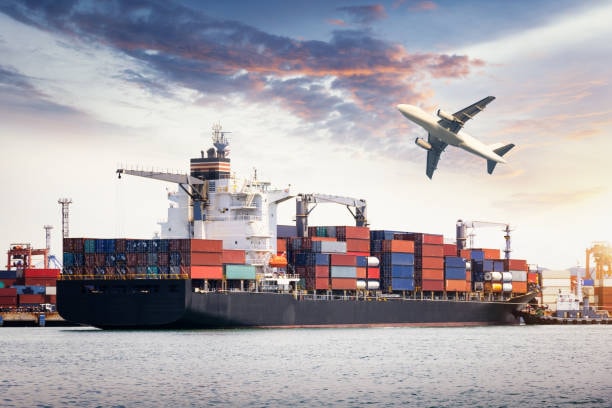
Aircrafts place several restrictions on air freight because of its weight and size. Cargo planes normally are involved with delivery of small items to several tons but even something as size can affect availability of cargo. Payload capacity also differs with aircraft type with a large cargo aircraft such as the Boeing 747-8F able to carry 140 tons of payload due to thorough security measures .

The capacity benefits of sea freight are observed in businesses that prefer shipping large quantities on a regular basis. Nevertheless, the flexibility of air freight in transporting smaller and more frequent consignments makes it effective to business with unstable pattern of demands or the firm that serves many smaller business markets.
Environmental Impact and Sustainability
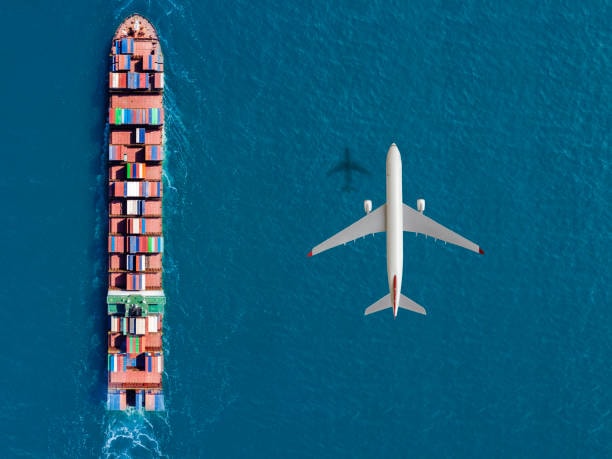
The decision to ship is more environmental friendly in a world striving to follow sustainable business practices. Use of sea freight has much less carbon emission per ton kilometers than using air freight, which results in a much smaller carbon footprint for businesses focused on sustainability . Based on the data of international maritime organization, sea shipping results in 10-40 grams admissions of CO2 per ton-kilometer whereas airshipping contributes to 500-1,500 grams admissions of CO2 per ton-kilometer.
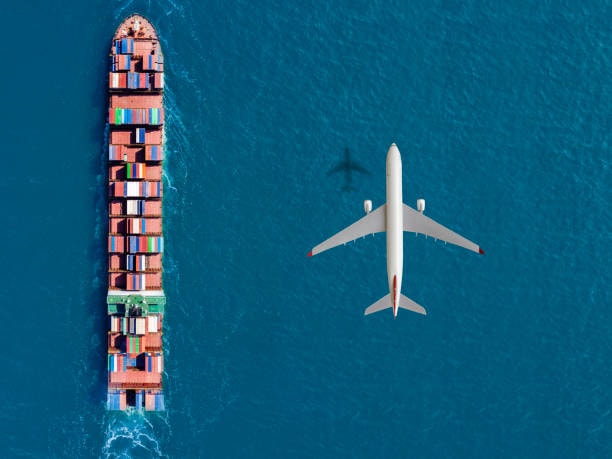
Such stark contrast renders sea freight as the eco-friendly modal of transport to businesses focused on sustainability. The carbon footprint minimisation and reduction of greenhouse gases has become an element of logistics strategy in many companies, so the alignment of the sea freight with the corporate environmental objectives can be considered the competitive advantage.

However, in certain occasion, the transportation time of sea freight would have an overall increased emission when the total supply chain is taken into consideration (such as warehousing, and inventory). Enterprises should combine their total logistics footprint into their environmentally friendly decisions in shipping, especially when dealing with hazardous materials .
Types of Goods Best Suited for Each Method
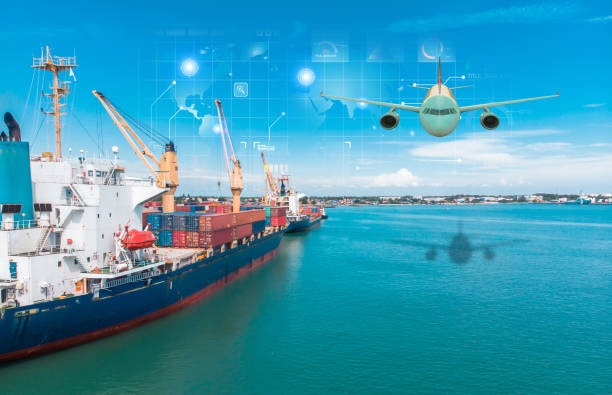
Various cargo also has different transportations that readily match the nature of the cargo depending on its nature, value and time sensitivity needs. Sea freight is very effective when transporting bulk goods, raw materials, spare parts, furniture, and textile, and non-perishable consumer items. The cost-effectiveness of the method, especially when shipping an entire container, is why the method should be used with products with low fluctuation in demand and longer shelf-lives.
High value electronics, pharmaceuticals, perishable foods, fashion items, spare parts and emergency supply are very effective through air freight. Air freight is worth such high costs due to their speed, security in terms of cargo, and their defined timeline air freight. Air transport is very important to time-sensitive documents, medical packaging or supplies and products with short market windows.
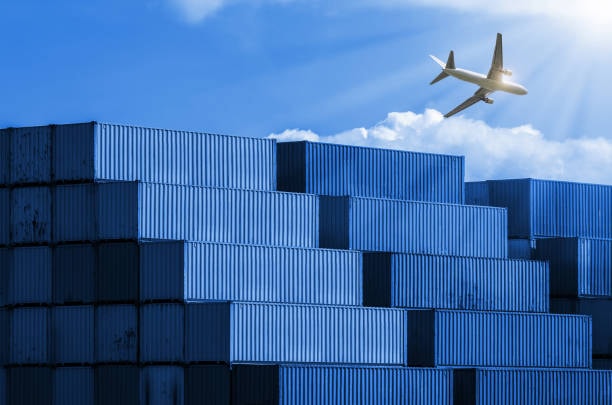
Special consideration is needed with fragile goods since sea shipping means that there is an increased risk of handling due to the goods exposure to harsh weather but with air shipping the handling is more delicate and with climate control. Most fragile goods can, however, be loaded using sea freight following good packaging and a choice of containers, a common practice in the logistics industry .
Security and Risk Management
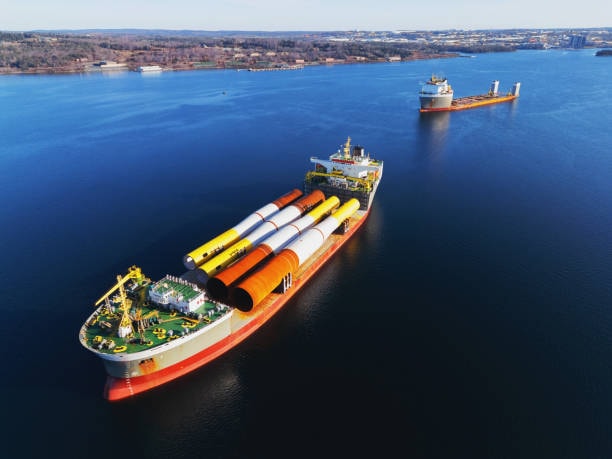
Security can have an influence on the two shipping methods. There is risk of piracy in some areas, port vulnerability and increased exposure time of the sea freight. Containerized cargo however offers sound security because the cargo is sealed in containers and the freight is tracked well.

Air freight has high level of security systems at the airport and also takes a shorter time to transit lowering the chances of theft. The use of air and ocean freight cargo aircrafts, since their work environment is controlled and has a few access points, makes cargo aircrafts more secure. Nevertheless, air cargo might not be able to deliver on time because of security checks and approval of regulations.
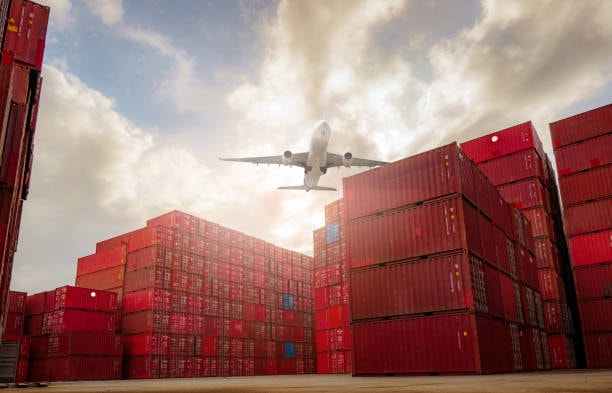
The prices of insurance usually correspond to these risk outlines and insurances of sea freights are different in terms of destination or loading cargo. Areas with a high-risk shipping lane usually demand more security and insurances. The usual rates of air freight insurance tends to be more uniform but tend to be higher in some classes of cargo ocean and air freight.
Documentation and Regulatory Requirements
Complexity of documentation is very different in both of the methods of shipping. Documents accompanying sea freight refer to bills of lading, commercial invoices, packing lists, certificate of origin and regulatory certificates of a cargo type and destination country. The extended transit times to allow greater time in preparing and correcting documents air freight prices.

Air freight differs mainly in respect to a much more rigid time limit. Bills of lading are substituted by air waybills and the documentation has to be accurate and correct prior to the departure. The speed at which air operations are carried out is likely to lead to major delays and expense in the event of errors ocean carriers.
The customs clearance process varies depending on the port and the airport where the airport is usually more faster but the ports are efficient in the trade of larger volumes. Knowledge of destination country requirements is essential in both the processes but time sensitivity is a characteristic of air freight so compliance is even more essential.
Geographic Considerations and Route Availability
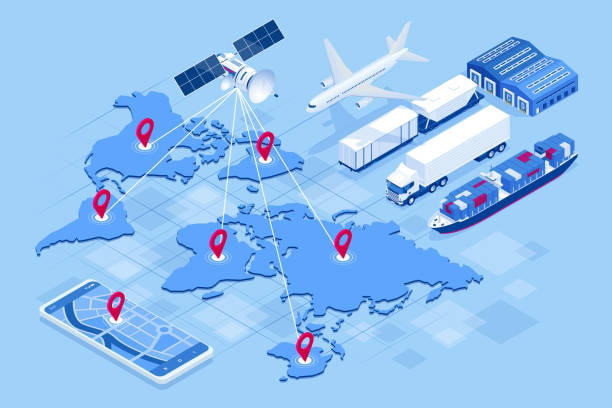
Location aspects play a huge role in the selection of shipping methods. Sea freight is also best suited to transoceanic transportation between large port cities and has long routes networks linking the production and consumption central in many parts of the world. Landlocked destinations however face the need of extra inland transport which may mean time and expenses shipment weight.
Airlines have better connectivity to inland and distant locations with airport accessibility through air freight. This is especially beneficial to those businesses which have wide geographic market or location where there is no good port accessibility. Air freight networks are of higher flexibility in routing and can adapt faster to changing patterns in demand more air freight.
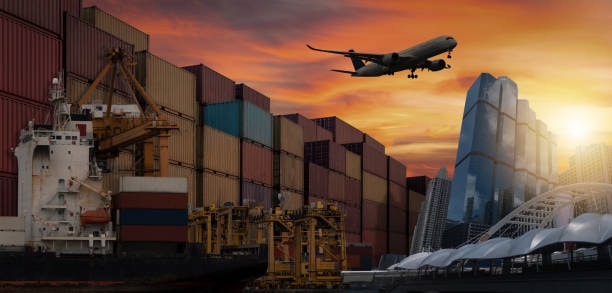
The accessibility of routs interplays with schedule revenues and expenses. Large seabased cargo plants carry out routine schedules although they might be constrained when it comes to departures. Air freight provides more departure possibilities but the lack of capacity is possible in high seasons, as well as on less busy destinations general air cargo.
Seasonal Fluctuations and Peak Periods
Both shipping options are impacted by seasonal demand patterns in different manners. The prices of the sea freights are usually constant across the year but may rise in peak transportation periods (usually before Chinese New Year and in pre-holiday seasons). The periods may be accompanied by capacity constraints facing equipment shortage and delays special air cargo.
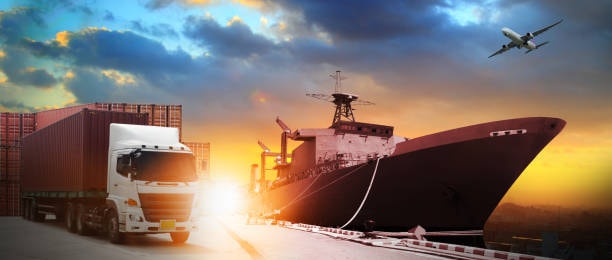
The seasonal changes are more dramatic in air freight as the rates can be doubled or tripled during the rush times such as the holiday shopping season. These trends have been accentuated by growth in e-commerce such that capacity planning can be a critical issue among businesses that have to depend on air freight services when facing high volumes cargo ships.
Knowledge of seasonal trends enables companies to make their shipping plans and they may alternate the two approaches during the entire year. Inventory positioning can be used as a method of strategic positioning that enables the business to avoid paying premiums during high seasons and still perform to the required service levels global trade.
Technology and Tracking Capabilities
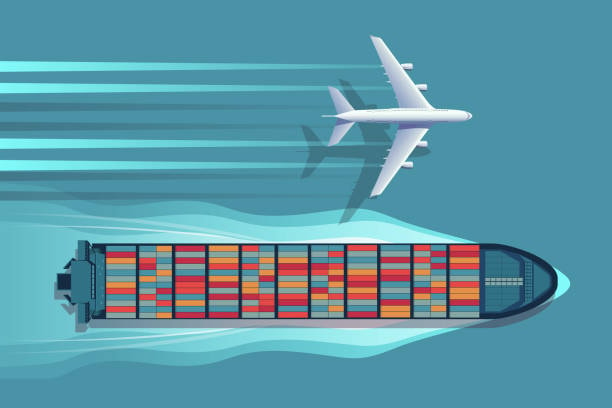
Both shipping modes have benefited more through new logistics technology on tracking and visibility. The development of GPS-enabled containers, IoT sensors, blockchain based documentation system has made sea freight tracking a lot more efficient. Tracking and monitoring of location in real-time and condition is also becoming a standard feature multiple flights.
The aviation industry is characterized by precision and safety, thus the air freight and its tracking systems are more developed. Flight tracking and electronic sorting systems, and integrated customs are all an outstanding visibility into the shipping process small volume goods.
Both of these have already introduced API referencing, automatic notifications, and mobile tracking apps, which allow firms to give real-time tracking packages to their customers. Superior analytics can be used to streamline routing and minimize delays as well as enhance supply chain performance.
Making the Strategic Decision: When to Choose What
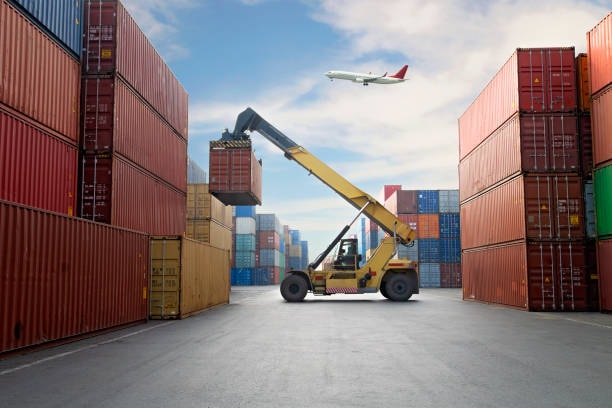
Most businesses should not think of that as an alternative between sea freight and air freight. Strategic approach is all about reviewing your product portfolio, understanding your customer requirements, market dynamics in order to feel out a mixed mode strategy container loads. Sea freight is well used to transport high-volume, stable demand products whereas air freight is well used to transport time-critical or high-value goods vs sea freight.
You can consider a tier system depending on the product group, level of service to the customers and market segmentations. High-end customers may be interested in air shipping, whereas traffic-sensitive groups are fitting to longer sea shipping deliveries. Geographic analysis is capable of showing the best modal split within various markets.
It becomes important to plan seasonally, where the base inventory is done via sea freight and the peak demand or inventory replenishment is done through air freight. This hybrid model is cost effective but continues to achieve the conventional level of service under various business conditions.
Future Trends and Industry Evolution
Technology, environmentally related regulations, and altering trade patterns ensure that the freight industry is a moving process. The processes of sea and air freight are also changing with autonomous vessels and computer-automated route planning and other automated systems that handle cargo.
The two areas are experiencing innovation because of environmental regulations. The sulfur requirements of the International Maritime Organization have already altered the activities of the sea transport, and aviation is under pressure to minimize emissions. It can alter relative costs positions and the levels of services.
The development of e-commerce keeps redefining freight patterns of demand, boosting air freight capacity and stimulating the innovation of speed and reliability in sea freight. The discovery of new shipping routes, such as navigating across the Arctic and new port capacities development, can also shift old logistics calculations.
Conclusion
The decision to use sea freight instead of air freight must be examined well since several factors have to be considered such as cost, time, cargo type, environmental concerns and business focus. The sea freight is extremely cost-effective and can ship large volumes, which makes it perfect for the bulk shipment and cost-sensitive services. Speed and reliability Air freight is suitable when speed and reliability of delivery are of high value and of a sensitive time-bound cargo, and it is worth the extra expense in the case of higher service levels and lower inventories. The mixed-modal strategy is the most commonly used method in most successful businesses, whereby they capitalize on the advantages of each of the approaches with respect to products, markets, and scenarios. The major thing is to know your needs, the total cost in logistics and you make shipping related to the whole idea of your business.
About GWT Worldwide
Shenzhen Guanwutong International Freight Forwarding Co.,Ltd. (GWT Worldwide) is an expert in logistics services, one that is specialized in global freight forwarding, supply chain solution and cross border e-commerce logistics. Having a successful operating platform both in China and in the global market, we provide businesses across the globe with reliable, affordable, and tailored logistic solutions. Our four-key services are Air Freight & Sea Freight, China Europe Railway Transport, International Express & Courier Solutions, Customs Clearance and Warehousing, and Amazon FBA shipping and labeling support. We have incorporated efficiency, transparency, and customer satisfaction in GWT Worldwide, due to the use of sophisticated logistics and an international network of reputable partners to support safe, fast, and compliant movement of your goods to the destination, origin to destination.


Thank you for reading!
Have questions, corrections, or better ideas? We’d love to hear from you!
We value every piece of feedback and promise to reply within 24 hours. Let's make this guide better together!
Note: Spam comments will not be published.